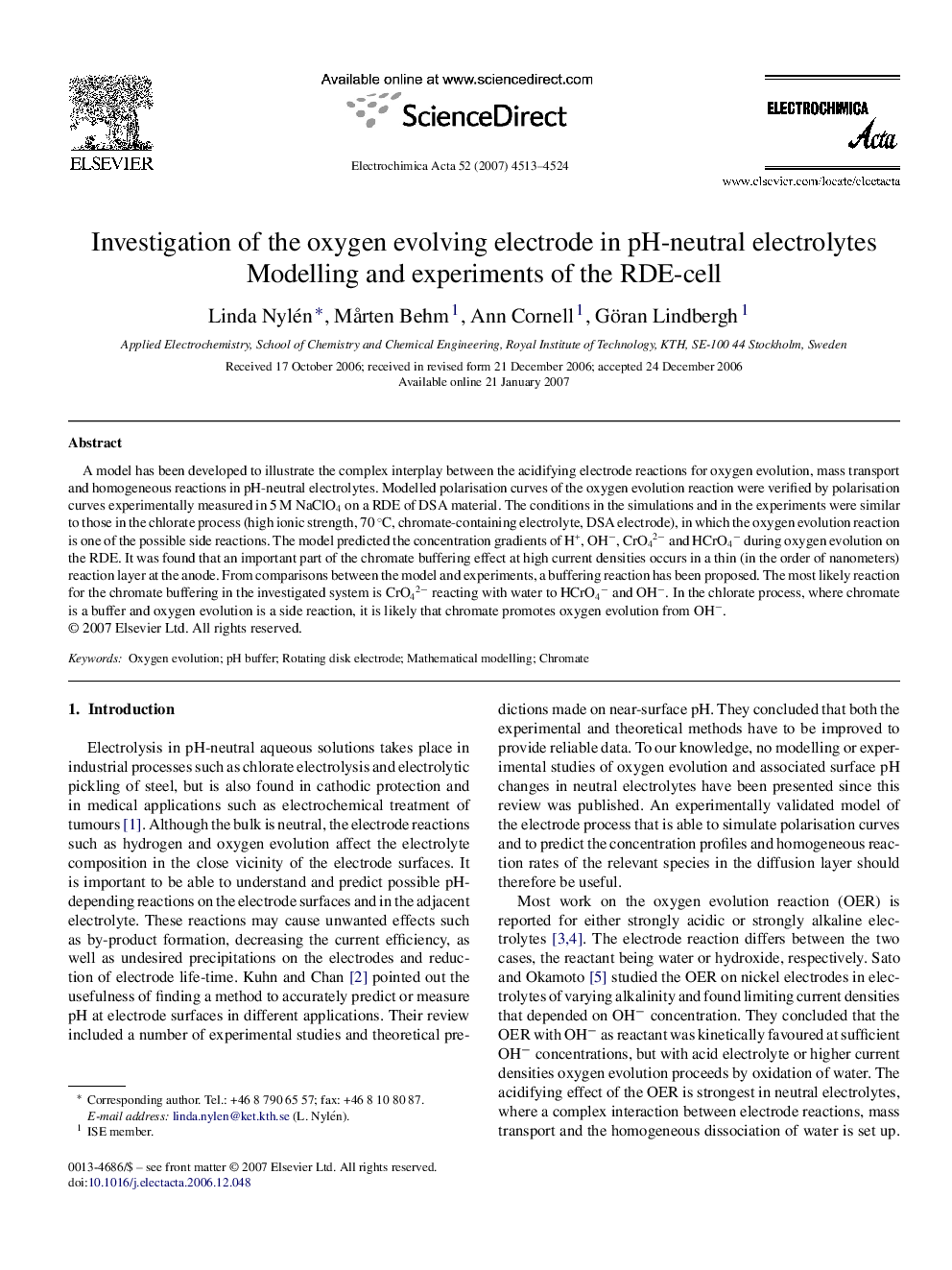| Article ID | Journal | Published Year | Pages | File Type |
|---|---|---|---|---|
| 195941 | Electrochimica Acta | 2007 | 12 Pages |
A model has been developed to illustrate the complex interplay between the acidifying electrode reactions for oxygen evolution, mass transport and homogeneous reactions in pH-neutral electrolytes. Modelled polarisation curves of the oxygen evolution reaction were verified by polarisation curves experimentally measured in 5 M NaClO4 on a RDE of DSA material. The conditions in the simulations and in the experiments were similar to those in the chlorate process (high ionic strength, 70 °C, chromate-containing electrolyte, DSA electrode), in which the oxygen evolution reaction is one of the possible side reactions. The model predicted the concentration gradients of H+, OH−, CrO42− and HCrO4− during oxygen evolution on the RDE. It was found that an important part of the chromate buffering effect at high current densities occurs in a thin (in the order of nanometers) reaction layer at the anode. From comparisons between the model and experiments, a buffering reaction has been proposed. The most likely reaction for the chromate buffering in the investigated system is CrO42− reacting with water to HCrO4− and OH−. In the chlorate process, where chromate is a buffer and oxygen evolution is a side reaction, it is likely that chromate promotes oxygen evolution from OH−.
